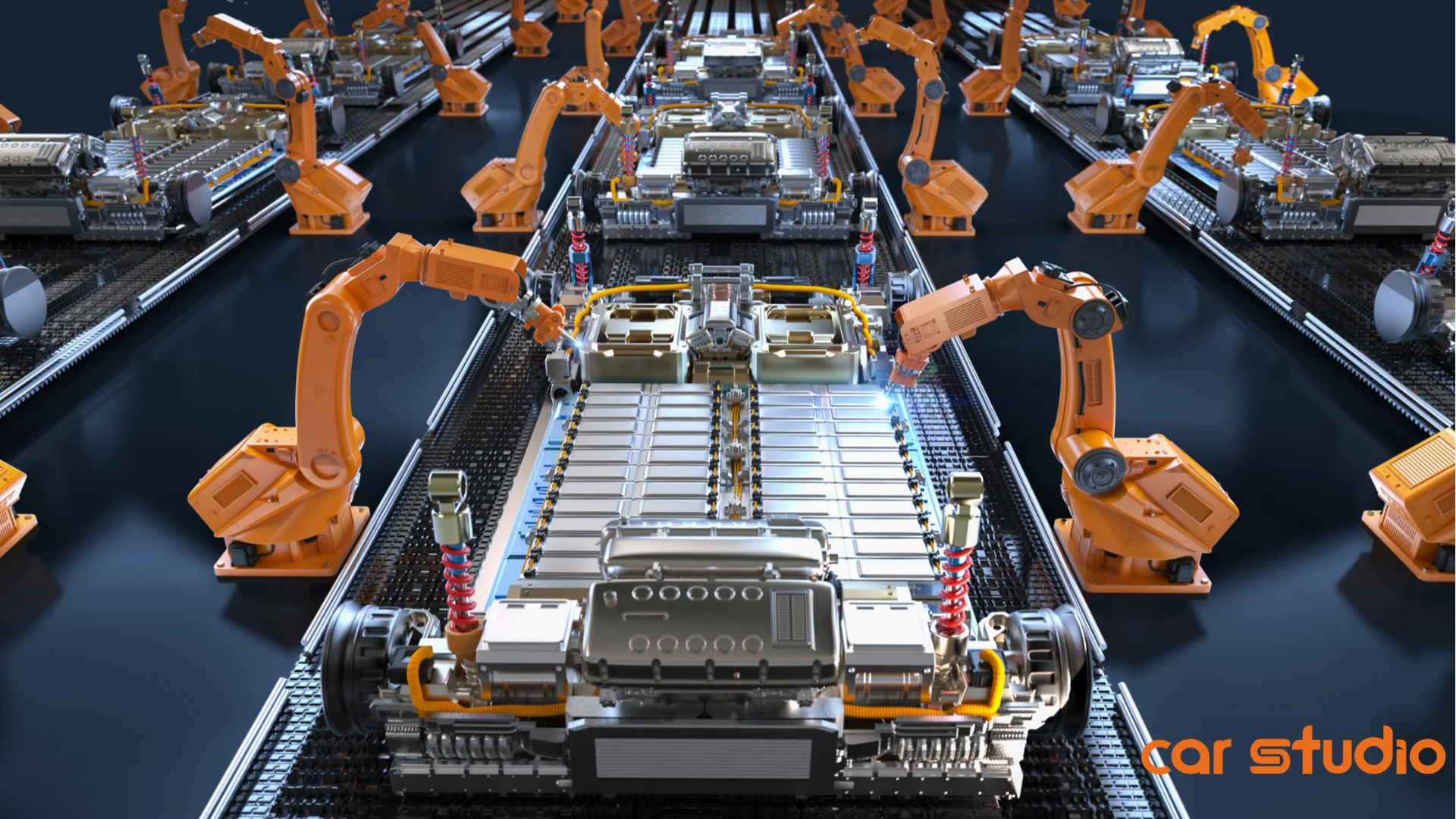
Implementing AI Platforms in Dealerships: A 2025 Readiness Guide
Implementing AI Platforms in Dealerships: A 2025 Readiness Guide
Artificial intelligence is redefining every corner of the automotive industry from vehicle design and predictive maintenance to marketing and retail operations. Yet for dealerships, the transition is both an opportunity and a challenge. The year 2025 marks a turning point: customer expectations are now shaped by instant digital experiences, while competitive margins depend on data-driven speed and accuracy. This readiness guide is crafted to help dealership owners, sales managers, and marketing teams navigate that transformation with confidence. It combines strategic insight with practical steps showing not only what AI can do, but how to implement it responsibly and profitably within your own operations.
Introduction: Embracing AI for Dealerships
In today’s fast-moving automotive world, change isn’t optional it’s inevitable. If you’re running or managing a dealership or used-car trading business, you’ve probably already noticed: customers arrive informed, impatient, and ready to compare. In this landscape, implementing AI platforms isn’t just a nice-to-have it’s fast becoming a must.
This guide is designed to walk you step-by-step toward readiness for 2025: to help you understand why AI matters, what it can do, and how you can start implementing it in real-world dealership operations. We’ll draw in insights from our blog content—especially on imaging workflows and broader platform adoption.
Why “AI for dealerships” matters right now
Efficiency & Scalability: When your inventory grows, data streams multiply, and customer expectations heighten, manual processes strain under pressure. AI can help you process volumes faster, more consistently, and more accurately.
Enhanced Customer Experience: Today’s buyer browses online, looks at dozens of listings, expects quick responses and personalized attention. AI tools can help you meet that expectation rather than fall behind.
Competitive Advantage & Cost Reduction: It’s not just about doing things faster it’s about doing them smarter. Better first impressions, faster listing times, fewer mistakes, stronger trust all lead to better conversions and ultimately, stronger margins.
So before you invest time, budget or energy, it helps to understand the broader context of how AI is disrupting the automotive sales landscape.
The Strategic Importance of AI in Modern Dealerships
Why AI?
At its core, implementing AI in a dealership is about more than just “new tech” it's about aligning your business with how customers now buy, how inventory now moves, and how the whole industry is shifting. Here are three key reasons:
Efficiency and Scalability: If you’re handling hundreds of vehicles, customers, leads, it’s impossible to keep up manually. AI helps you scale without losing quality.
Enhanced Customer Experience: AI can quickly surface what a particular buyer is likely to want, engage them promptly (even when your sales team is offline), and personalise the process rather than treating everyone the same.
Cost Reduction and Better ROI: Yes, there’s an upfront investment but when you reduce manual editing, speed up listings, cut logistics, you begin to see measurable ROI. For example, in one piece we discuss how AI-based imaging can reduce visual production costs by 40-60% within months.
Current Use Cases in the Industry
Let’s make this concrete by looking at how AI is being used today especially in automotive sales.
Customer Relationship Management (CRM) & Lead Engagement: AI algorithms are being used to predict customer behaviour what they browse, when they’ll engage, what they’re likely to buy. In our blog “AI Platform Implementation: What Dealers Must Know in 2025”, we mention how AI tracks micro-behaviours and uses them to deliver personalised recommendations. carstudio.ai
Inventory Management & Predictive Analytics: The wrong vehicle in inventory is costly. AI helps forecast demand, optimize stock levels, and reduce carrying costs. Example: By analysing sales history + regional trends + online interaction data, you can order smarter. carstudio.ai
Virtual Showrooms / Digital Tours / Imaging Workflows: One of the big ready-to-deploy areas is how vehicles are presented online. In our article on imaging workflows (“AI in Action: A Step-by-Step Look at the Car Imaging Workflow Revolution”), we explain how AI transforms photo capture, editing and distribution and thereby the first impression a buyer has of your stock. carstudio.ai+1
Planning for AI Integration by 2025
Now we get to the “how”. The journey to implementing an AI platform in your dealership isn’t just “buy software and go”. It requires thoughtful planning. Below are key steps and considerations.

1. Assessing Your Current Technology Landscape
Before you adopt anything new, you need to understand where you stand. Ask:
Hardware & Software Capabilities: Do you have systems (network, servers, cloud) that can support advanced tools? Are your computers, cameras, sales-floor tech up to scratch?
Data Readiness: Are your data sets clean, organised, accessible? For AI to work, you need reliable inputs—not messy spreadsheets.
Staff Skills & Culture: Are your employees ready to work alongside AI? Do they understand it? Or is there resistance? Training needs will vary.
Workflow bottlenecks: Where are your inefficiencies? Are photo-shoots taking days? Is inventory listing delayed? Identifying these helps you pick where to start.
2. Setting Clear Objectives (SMART)
Before diving into tools, you must define what you hope to achieve. Use SMART goals: Specific, Measurable, Achievable, Relevant, Time-bound.
For example:
“Reduce average days-to-list by 30% within six months.”
“Increase online engagement (click-through rate) for vehicle listings by 20% in three months via improved imagery.”
“Automate lead qualification so that 50% of inbound leads are pre-qualified before salesperson contact, within one quarter.”
Having clear targets means you can measure success and beware of the “nice tech but no clear result” trap.
3. Choosing the Right AI Platform
Selecting an AI platform is more than picking the latest tool. Consider:
Compatibility with existing systems: It should integrate with your CRM, inventory management, website, photo workflows.
Ease of use & training: The platform should have a manageable learning curve; your team must be able to adopt it.
Scalability: As your dealership grows, inventory grows, you need something that can scale not just a trial tool.
Vendor support & customization: Does the vendor help implement, integrate, train? Can the system be tailored (branding, workflow, language)?
Data & security: Since you’ll be using customer and vehicle data, you must ensure the platform supports encryption, data governance, privacy compliance.
In the blog “AI Platform Implementation: What Dealers Must Know in 2025” we emphasise these points: ethical use, data protection, and ethical AI being a standard, not an afterthought. carstudio.ai
4. Training & Development

Tools alone don’t guarantee success. Your people matter.
Staff Training: You need a comprehensive program to help your team use the AI platform effectively. Importantly, help them see why this benefits them (not “it replaces you”, but “it frees you to close more deals”).
Continuous Learning & Adaptation: AI is not “install once and forget”. Monitor performance, gather feedback, adjust workflows, refine usage.
Cultural Buy-in & Change Management: Technology change is often resisted because it’s perceived as threat. In the blog we mention that “the first step is simple… for many dealerships, that first step is AI-powered car photo editing.” carstudio.ai Frame rollout in phases, engage your team early, use quick-win projects to build confidence.
Implementation Roadmap: From Vision to Execution
Here’s a proposed roadmap you can work with (and adapt to your size, region, and budget):
Phase 0 – Preparation & Baseline
Audit current tools, data, workflows.
Kick off internal stakeholder meetings: sales, marketing, service, IT.
Define SMART objectives (e.g., “Reduce days-to-list by 30% by Q4”).
Choose pilot use-case (e.g., imaging workflow) and vendor shortlist.
Phase 1 – Pilot & Quick Win
Implement the pilot (for example: use an AI imaging workflow to enhance vehicle photos and list faster). The blog “AI Car Imaging Workflow: Behind the Scenes…” shows this use-case in depth. carstudio.ai
Measure and track results: listing speed, engagement metrics, lead conversion.
Provide staff training on the pilot tool, gather feedback from users.
Phase 2 – Scale & Integrate
Based on pilot success, expand to additional processes: lead-qualification chatbots, predictive inventory analytics, customer personalisation.
Integrate the AI platform with your CRM, inventory management, website listing feeds.
Develop staff capability across departments (sales, service, marketing).
Phase 3 – Culture, Governance & Continuous Improvement
Establish internal governance: data policies, ethical AI guidelines, security frameworks. See blog section on “Legal and Ethical Considerations”. carstudio.ai
Develop continuous learning culture: set up workshops, monitor metrics, iterate workflows.
Keep customer experience as guiding star: technology should enable your team to build trust, not just automate.
Review goals regularly, adjust SMART targets, and scale further into advanced areas (e.g., virtual customisation tools, AI-based service maintenance forecasting).
Phase 4 – Vision for 2025 and Beyond
Imagine a dealership where a visitor walks in, the system recognises their appointment, shows them vehicles they previously browsed, a salesperson already has insights into their preferences. In the blog this is described as “The Dealer of 2025 – A Vision”. carstudio.ai
Service becomes proactive rather than reactive. Inventory is curated dynamically, visuals are studio-grade, listings go live within hours of arrival.
Technology becomes invisible: What the customer remembers is the human connection, enabled by AI in the background.
Personal Reflections & ‘Human’ Perspective
Let me step into your shoes for a moment. You’ve built this business focused on selling quality cars, treating customers well, building your reputation. Now you’re looking at “AI” and it can feel overwhelming:
Will this replace my staff?
Will it cost too much for uncertain return?
Do I have the data/tech to even begin?
Let me reassure you: The most successful dealerships think of AI not as replacing humans, but empowering them. In the imaging-workflow article we say: “AI doesn’t replace that human instinct; it amplifies it.” carstudio.ai
Remember: your team brings trust, relationship-building, negotiation skills. AI helps them by taking away tedious manual work, freeing them to focus on what they do best. When staff see that the tool is there for them (not against them), adoption becomes smoother.
Also: start small. Use a tangible use-case (for example, better car photos for your listings) that offers visible results. That builds momentum and confidence much better than trying to overhaul your entire business overnight.
Finally: keep the customer front-and-centre. A shiny AI tool is worthless if your customer feels you’re treating them like a number. Use AI so you can give a more personalised, faster, more trustworthy experience and your reputation will benefit.
Conclusion: Embracing AI for Future Success
As 2025 approaches and the automotive sales landscape evolves, AI is not a futuristic idea it’s a real-world business imperative. To recap:
Understand the strategic importance: AI can transform efficiency, customer experience, cost-structure.
Plan and prepare: Assess your tech, define clear objectives, choose the right platform, train your staff.
Start small, scale smart: Pilot with a quick-win (e.g., imaging workflows), measure results, then integrate further.
Don’t forget culture, ethics, governance: Customer trust and staff buy-in are just as important as the technology.
Keep your human-focus: AI is a tool to support human connection, not replace it.
By taking these steps, dealerships can harness AI to deliver enhanced efficiency, deeper customer engagement, faster listings, stronger margins and ultimately, maintain or strengthen their competitive edge.
FAQ Section
Q: What are the initial costs involved in implementing AI in a dealership?
A: The initial investment for AI implementation can vary widely depending on the size of your dealership, the chosen platform, and the level of integration you aim for.
At the lower end, small dealerships might start with affordable SaaS-based tools for example, AI imaging workflows or automated lead-response systems where costs mainly include monthly software subscriptions and minimal training.
Mid-to-large operations, however, often invest in custom integrations, which may require hardware upgrades (for higher-capacity photo capture, VR experiences, or analytics servers), as well as dedicated IT or data-management staff.
You should also budget for staff training, data cleansing, and potential consulting support during rollout.

On average, dealerships that commit to a structured, multi-phase implementation spend 3–7% of their annual operating budget in the first year on AI adoption. While that might sound steep, most recover these costs within 12–18 months through improved efficiency, faster sales cycles, and reduced outsourcing expenses (such as professional photo editing or manual data entry).
Q: How does AI improve customer satisfaction?
A: AI fundamentally transforms how dealerships interact with customers. Imagine a buyer browsing your online listings late at night an AI assistant instantly suggests similar models, answers common questions, and even schedules a test drive for the next morning. That’s instant engagement without needing someone on the clock 24/7.
AI tools analyse past interactions, browsing patterns, and purchase history to personalise every touchpoint: from recommending vehicles based on lifestyle (family-friendly, fuel-efficient, luxury) to tailoring financing options. This leads customers to feel understood rather than sold to.
Additionally, AI chatbots and CRM systems provide faster, more accurate responses to inquiries reducing waiting times, one of the biggest sources of frustration for buyers. Over time, dealerships that adopt AI-driven service models see higher satisfaction scores, more positive reviews, and stronger repeat-purchase behaviour. In short, AI allows you to deliver a “white-glove” experience at digital scale.
Q: Can AI platforms integrate with existing dealership management systems (DMS)?
A: Yes most modern AI platforms are built with integration flexibility in mind. They use APIs (Application Programming Interfaces) or middleware connectors that allow them to “talk” to your existing CRM, inventory management, or accounting software.
However, the complexity of integration depends on your current setup. If your systems are cloud-based and relatively recent, the process is usually smooth. Older or on-premise systems may require additional custom connectors or IT support to synchronise data securely.
A good practice before choosing a vendor is to request a proof of concept (POC) a small-scale test where the AI platform interacts with a limited dataset from your DMS. This reveals compatibility issues early and prevents costly surprises later.
For instance, when integrating AI imaging workflows (like those discussed in Car Studio AI’s article on AI car imaging workflow dealers rely on), dealerships often link them directly to inventory management tools so that enhanced photos are automatically uploaded with minimal human input.
Q: What are the risks of AI in dealerships?
A: Like any powerful technology, AI carries both opportunity and responsibility. The most common risks include:
Data Security and Privacy: AI thrives on data customer information, vehicle records, transactional histories. Ensuring that this data is securely stored, encrypted, and processed under GDPR/KVKK or similar privacy regulations is critical.
Over-automation: When dealerships rely too heavily on AI for customer communication, interactions can feel impersonal. The key is balance let AI handle repetitive tasks, but keep the human touch for conversations that matter.
Continuous Updates & Maintenance: AI models evolve fast. Without regular updates and retraining, the system’s performance may degrade. Allocating a budget for ongoing optimisation is crucial.
Bias & Misinterpretation: Poorly trained models can make biased predictions (for example, over-prioritising certain leads). Choosing transparent, reputable vendors and periodically auditing results helps prevent this.
Ultimately, these risks are manageable especially when you treat AI as a collaborative tool that complements your team, not replaces it. Dealerships that combine AI efficiency with human empathy often see the strongest long-term gains.
Q: How long does it typically take to implement an AI system in a dealership?
A: Implementation timelines vary, but a realistic average ranges from four months to one year, depending on the project’s complexity and how ready your team is. Here’s a general breakdown:
Phase 1 – Assessment (2–6 weeks): Auditing systems, collecting data, defining objectives, selecting vendors.
Phase 2 – Pilot (1–3 months): Testing one AI use-case (like imaging automation or CRM prediction) on a small scale, refining workflows.
Phase 3 – Integration (3–6 months): Connecting the AI platform with other systems, training staff, establishing new processes.
Phase 4 – Optimisation (Ongoing): Monitoring performance, updating models, expanding to additional functions such as lead management or predictive inventory analytics.
Smaller dealerships may go live within a single quarter if they adopt plug-and-play tools. Larger, multi-location networks with custom DMS systems usually need a staged rollout, sometimes extending beyond 12 months.
That said, the benefits start showing quickly often within weeks of launching the first pilot. As seen in our AI Platform Implementation Guide, dealerships report faster listing times, better visual consistency, and increased online engagement within the first 30 days.
